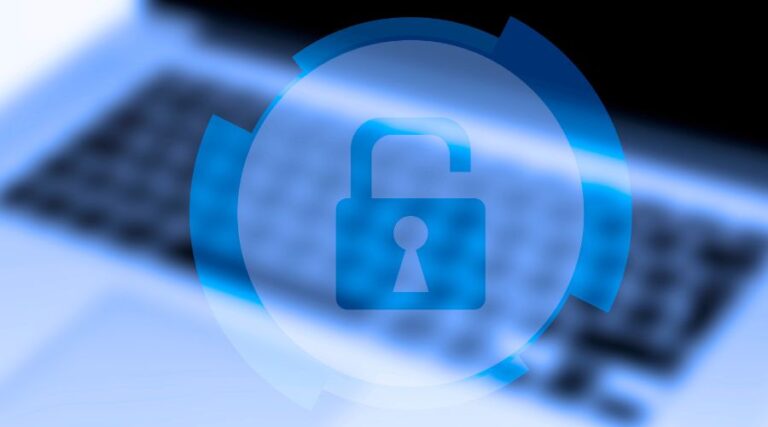Cybersecurity threats are becoming more sophisticated, putting businesses at greater risk than ever. Companies must take proactive steps to protect sensitive information from ransomware and insider threats. Strengthen your defenses with robust security protocols, regular employee training, and timely software updates. Explore more tips in the blog post to learn how to safeguard your workplace and enhance your organization’s cybersecurity strategy while minimizing potential risks.
The Importance Of Workplace Cybersecurity
Cybersecurity isn’t just an IT problem; it’s a business-critical issue that affects operations, financial stability, and reputation. A cyberattack can compromise sensitive customer data or intellectual property, and the financial losses associated with breaches are staggering—in some cases costing millions of dollars in recovery efforts.
According to a report by IBM, the average cost of a data breach in 2024 was $4.88 million, a 10% increase over last year and the highest total ever. With bad actors continuously finding new vulnerabilities to exploit, organizations can no longer afford to take a reactive approach to security. Preventative measures are key to staying ahead.
This guide outlines best practices for enhancing cybersecurity in your workplace, whether you’re a small business or a large corporation.
1. Educate Employees On Cybersecurity Practices
Start With Training And Awareness
Human error is one of the leading causes of cybersecurity breaches. According to a study by Stanford University, 88% of data breaches are attributed to employee mistakes. Whether it’s clicking on phishing emails or mishandling sensitive information, the risks are significant.
Provide regular training sessions covering topics such as:
- How to identify phishing attempts and suspicious links.
- The importance of using strong, unique passwords.
- Recognizing social engineering tactics.
Make the training interactive and include practical examples your team may encounter.
Implement a Bring-Your-Own-Device (BYOD) Policy
If employees use personal devices for work purposes, implementing a BYOD policy is critical. Establish guidelines regarding minimum security requirements, such as antivirus software and encryption, to ensure devices meet security standards before connecting to the business network.
2. Strengthen Password Policies and Authentication
Weak passwords make your systems an easy target for cybercriminals. To counteract this, enforce a strong password policy that includes:
- Minimum password length (e.g., 12 or more characters).
- A mix of uppercase, lowercase, numbers, and symbols.
- Automatic prompts to change passwords periodically.
Additionally, implement multi-factor authentication (MFA). MFA provides an extra layer of security by requiring users to verify their identities through multiple methods, like a text message or an authentication app.
3. Securely Manage And Dispose Of Sensitive Information
Use Media Shredding for Data Disposal
Sensitive business information stored on physical media such as CDs, DVDs, and USB drives can pose a significant cybersecurity risk if not disposed of properly. Simply deleting files or formatting the media is often not enough, as data can still be recovered using specialized tools. Media shredding provides a secure solution by physically destroying these items, ensuring the data is rendered completely unrecoverable. This process is especially important for businesses handling confidential client information, financial records, or proprietary data, as it helps prevent data breaches and ensures compliance with privacy regulations.
Adopt Hard Drive Destruction Practices
Retiring old computer systems or servers? Simply deleting files from hard drives isn’t enough, as skilled hackers can recover data using special software. Hard drive destruction is the best way to permanently wipe information from retired devices.
Partner with a professional media destruction service that provides compliance with security regulations such as HIPAA and GDPR. This ensures data isn’t only destroyed securely but also in an environmentally responsible manner.
4. Use Scheduled Secure Shredding for Paper Documents
Despite advancements in digital technology, many workplaces still rely on paper records to store sensitive information. Cybersecurity isn’t just about digital data; physical documents can lead to breaches.
Secure shredding ensures that printed records, such as financial statements, employee information, and proprietary research, don’t fall into the wrong hands. Implement a regular shredding schedule to ensure the timely disposal of sensitive documents. Use secure bins to collect documents before shredding, keeping them safe until destroyed. Partnering with a licensed shredding provider can help manage this process securely and efficiently.
5. Keep Software and Systems Updated
Outdated software can leave security gaps, making your business an easy target for cybercriminals. Regularly updating your systems ensures that vulnerabilities are patched. Here’s how to manage this effectively:
- Enable automatic updates for all software and operating systems.
- Promptly install security patches provided by your software vendors.
- Conduct periodic vulnerability assessments to identify outdated systems.
6. Utilize Firewalls, VPNs, and Encryption
Protect with Firewalls
Firewalls act as the first line of defense between your internal network and external threats. Set up and monitor hardware and software firewalls to filter traffic and block suspicious activities.
Encrypt Data
Encryption protects sensitive data by converting it into unreadable code. Ensure that all business-related communications, financial transactions, and customer records are encrypted.
Secure Remote Access with VPNs
With more employees working remotely, securing access to workplace systems is vital. Encourage remote employees to use Virtual Private Networks (VPNs) to maintain a secure connection and prevent unauthorized access to company data.
7. Monitor and Audit Cybersecurity Systems
Improve your defenses by continuously monitoring system activities for unusual patterns or vulnerabilities. Consider tools like Security Information and Event Management (SIEM) solutions, which help identify threats in real time.
Conduct regular audits of your cybersecurity practices to ensure compliance with industry standards. By doing so, you can identify areas of improvement and stay ahead of evolving threats.
8. Build a Culture of Cybersecurity
Creating a strong culture of cybersecurity means making it a shared responsibility across every level of the organization. Reinforce the idea that cybersecurity isn’t just the IT department’s job; it’s everyone’s duty to protect company assets.
Regularly communicate the importance of cybersecurity, rewarding employees who report vulnerabilities or consistently follow best practices. Over time, this will help foster habits that strengthen your workplace’s overall security posture.
Ensure Security With Professional Media and Document Destruction Services
Cybersecurity threats are a reality no modern workplace can ignore. By educating employees, adopting secure shredding and hard drive destruction practices, and leveraging advanced tools, your organization will be better equipped to combat risks. Strong data protection strategies are key to building trust with employees, clients, and stakeholders. Secured Document Shredding, located in Midland, Texas, is your trusted partner in safeguarding sensitive information. From secure document shredding to drive destruction hard, they provide reliable solutions to protect your physical and digital data.
Take a proactive approach—evaluate your security measures and let Secured Document Shredding help close any gaps. Their expert team ensures that your confidential information is securely destroyed, giving you peace of mind. Contact Secured Document Shredding today to discuss your needs and protect your workplace!

